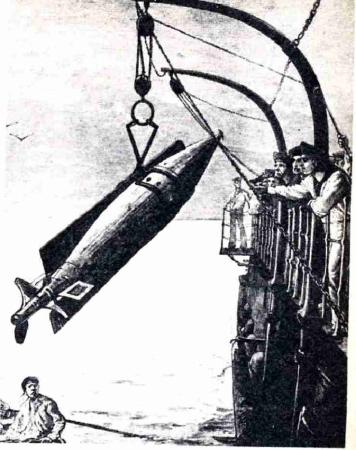- Author
- Newspaper, The Times of London
- Subjects
- History - general, Ship design and development, Naval technology
- Tags
-
- RAN Ships
- None noted.
- Publication
- September 2003 edition of the Naval Historical Review (all rights reserved)
Extract from The Times of London, 14 November 2002. Forwarded by David Simmonds (Member, WA)
A REMARKABLE COINCIDENCE has been noticed on the anniversaries of two of the pioneer developers of the torpedo weapon as we know it.
Robert Fulton, the American engineer, was born on this day in 1765. He believed that his prototype torpedoes would ‘in a few years put a stop to maritime wars’, attempting to convince the American, French and British Governments to buy the weapons he had designed. Some praised his innovations as a ‘means of annoying the enemy in their own ports with little comparative risk to ourselves’; others thought that Fulton’s experiments would ‘encourage a mode of war which they who commanded the seas did not want.’ Despite some partial success with his weapons, sinking ships in demonstrations at Deal (UK) in 1805 and New York in 1810, his work was not given additional funding and he abandoned his research. Strictly speaking, Fulton’s weapons were not true torpedoes but floating mines; it was not until it became possible to accommodate motive power within the projectile itself that the modern weapon was developed to its full potential.

Robert Whitehead, the English inventor of the mobile torpedo, died on this day in 1905. Half a century after Fulton’s experiments, the first self-propelled torpedo was designed and built at Fiume, Italy (now Rijeka, Croatia) in 1866 by Whitehead. It was driven by a small engine run by compressed air; a hydrostatic valve and pendulum balance, connected to a horizontal rudder, maintained a constant depth.
By 1870 Whitehead had increased its speed to seven knots and it was capable of hitting a target from 700 yards range. Many of the components used in the prototypes were still in use in the Second World War and the overall form of the torpedo has remained virtually unchanged to the present day – it was a Whitehead Mk VIII torpedo that sank the Argentine cruiser General Belgrano during the Falklands War in 1982.




